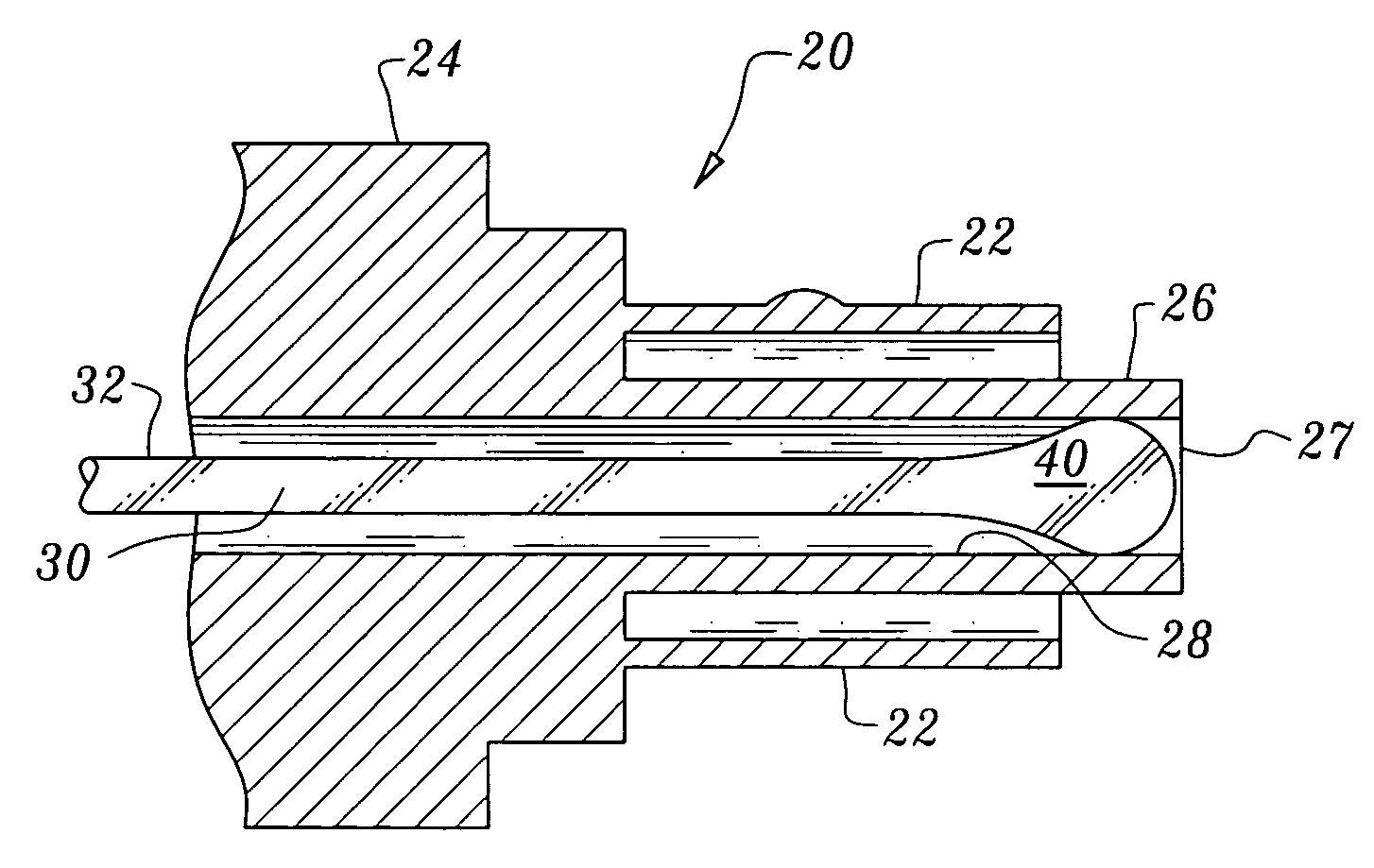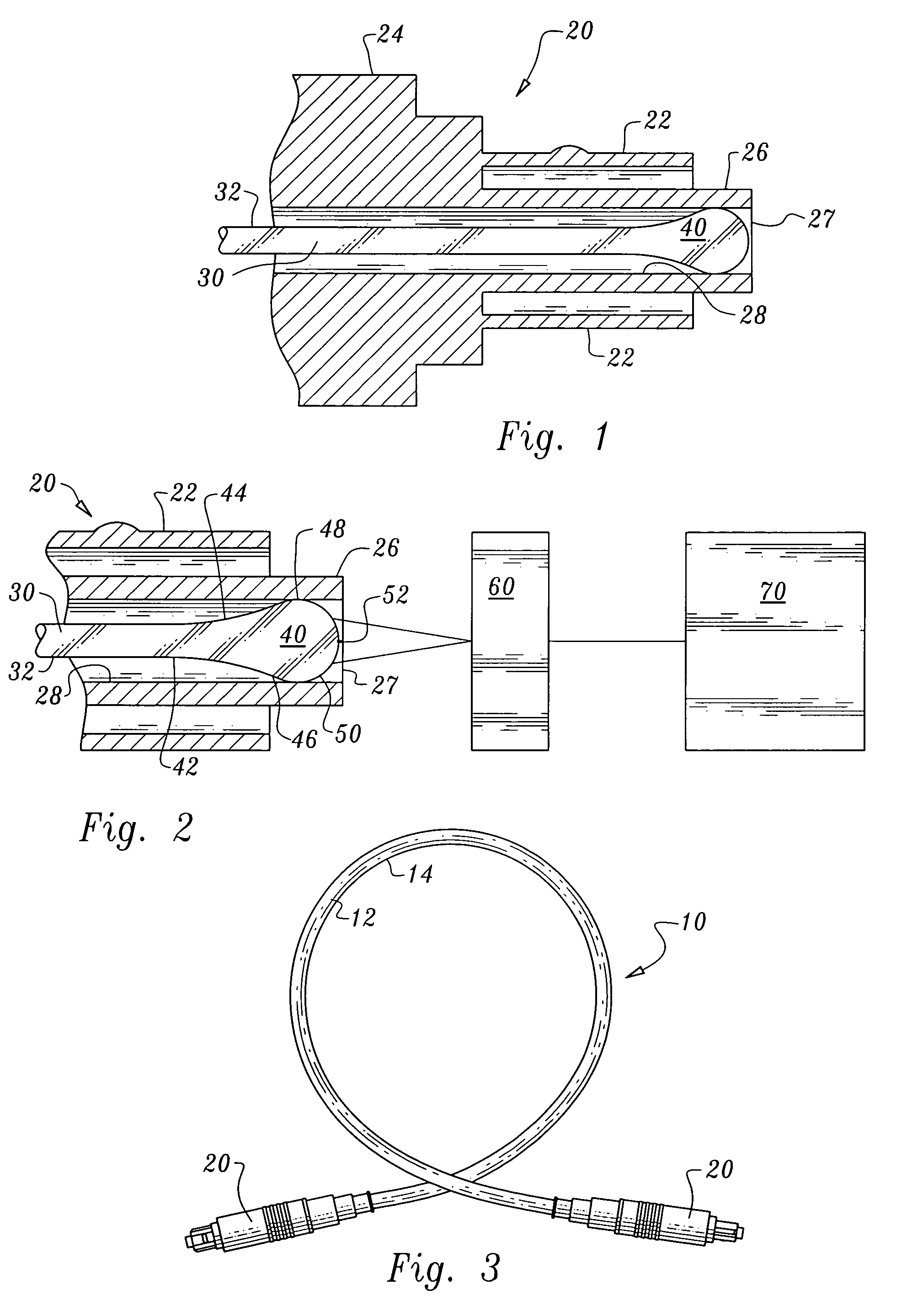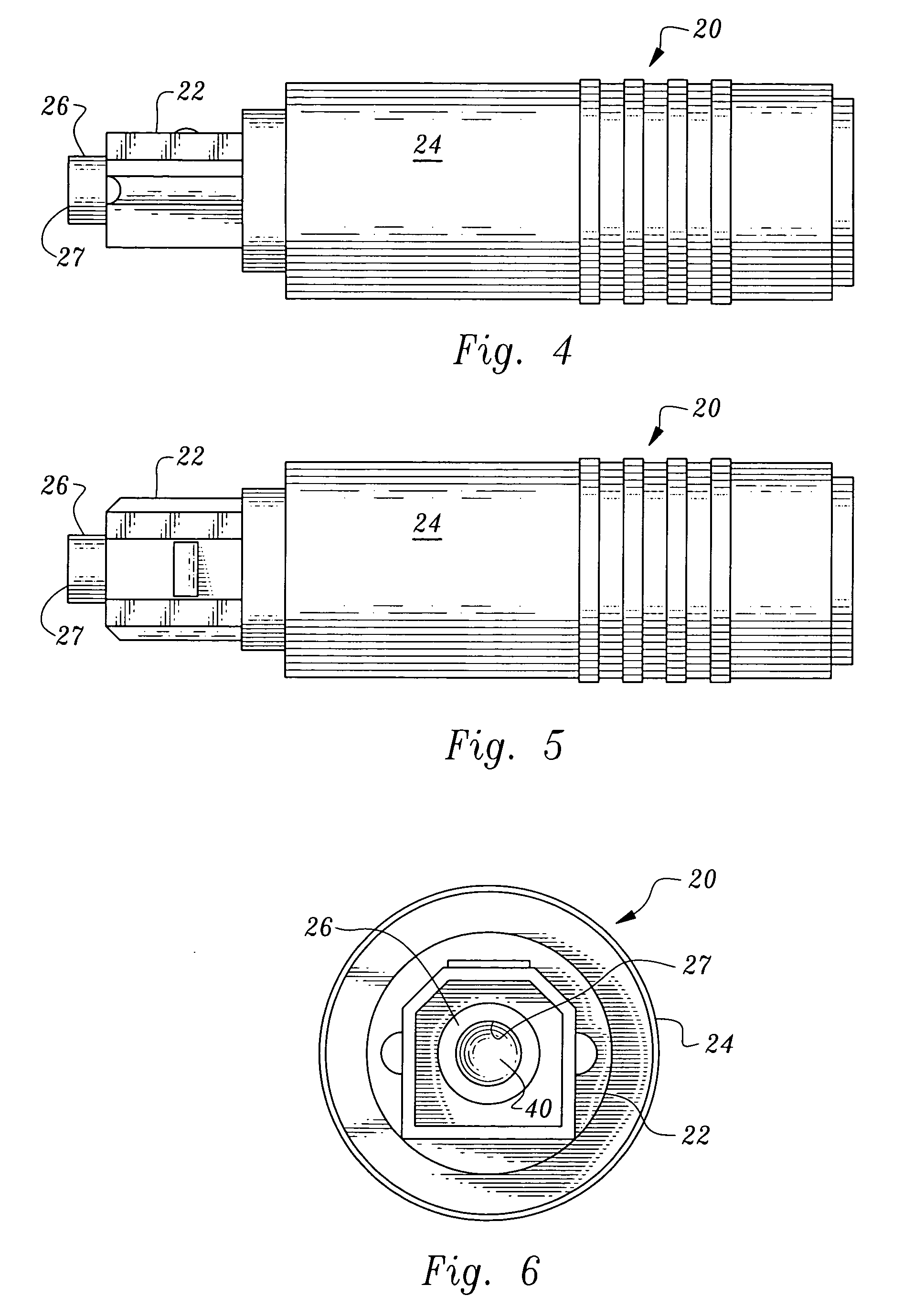Fiber optic cable with connector
a technology of fiber optic cables and connectors, applied in the field of fiber optic cables, can solve the problems of inability to achieve the effect of maximizing the signal intensity transmitted, and the fiber optic cable typically utilized in the toslink system exhibits a signal loss of 160 decibels per meter,
- Summary
- Abstract
- Description
- Claims
- Application Information
AI Technical Summary
Benefits of technology
Problems solved by technology
Method used
Image
Examples
Embodiment Construction
[0026]Referring to the drawings, wherein like reference numerals represent like parts throughout the various drawing figures, reference numeral 10 (FIG. 3) is directed to a cable for transmitting an optical signal between two locations. The cable 10 is particularly configured with suitable fiber connectors 20 to join signal processing components 70 (FIG. 9) together and with an optical signal being transmitted between the separate signal processing components 70. In a preferred embodiment, the cable 10 connects components configured with connectors compatible with a TOSLINK interconnection standard, such as is commonly used to couple audio components together, such as audio receivers and sources of audio sound, such as DVD players.
[0027]In essence, and with particular reference to FIGS. 1–3, basic details of the cable 10 are described. The cable 10 provides a run 12 of fiber optic light transmitting fiber 30 extending between a pair of fiber connectors 20 located at terminal ends of...
PUM
 Login to View More
Login to View More Abstract
Description
Claims
Application Information
 Login to View More
Login to View More - R&D
- Intellectual Property
- Life Sciences
- Materials
- Tech Scout
- Unparalleled Data Quality
- Higher Quality Content
- 60% Fewer Hallucinations
Browse by: Latest US Patents, China's latest patents, Technical Efficacy Thesaurus, Application Domain, Technology Topic, Popular Technical Reports.
© 2025 PatSnap. All rights reserved.Legal|Privacy policy|Modern Slavery Act Transparency Statement|Sitemap|About US| Contact US: help@patsnap.com



